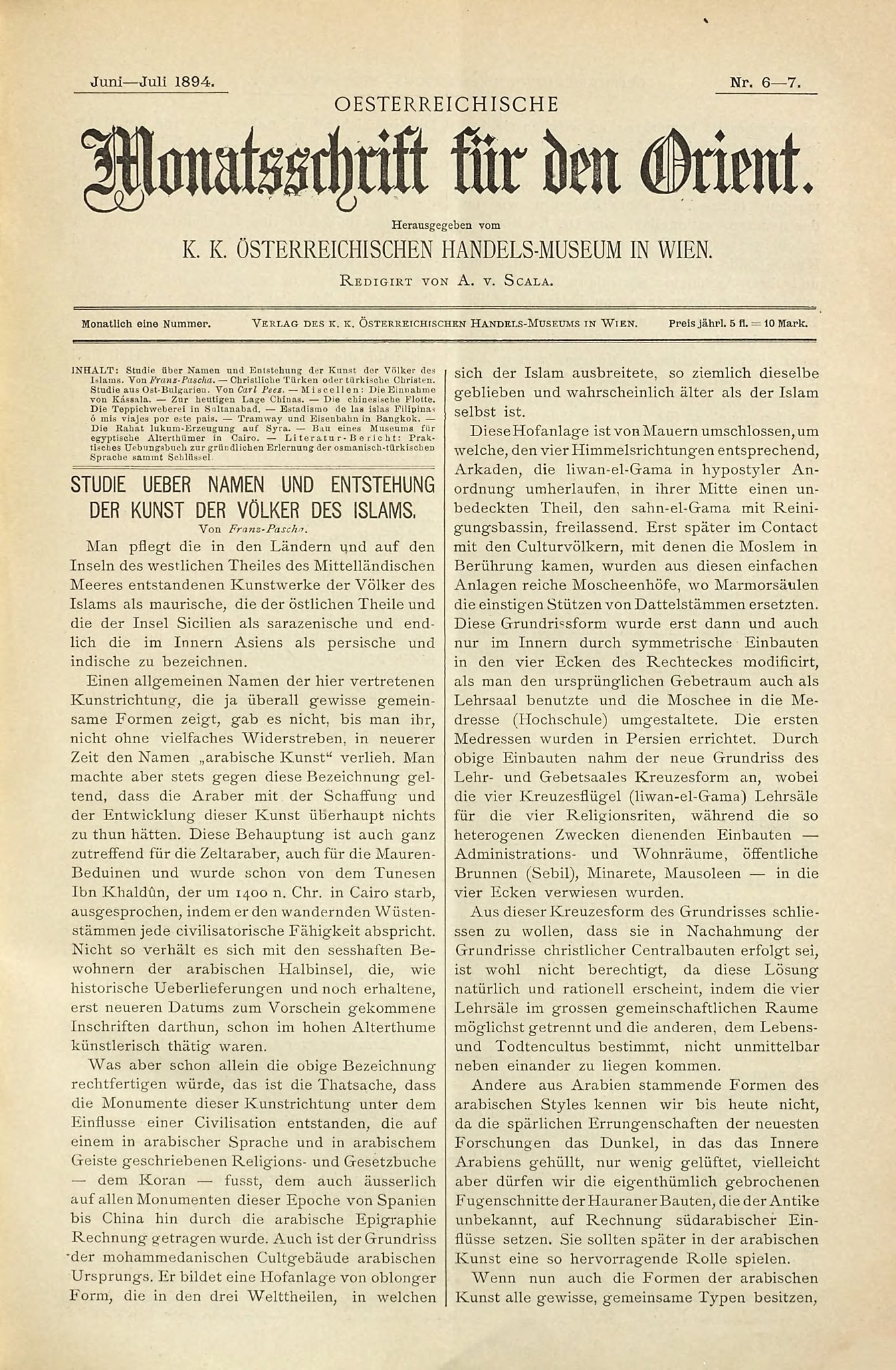Recherche
Franz gives a short description of the qamariyya in terms of technique, typology, light effect within an architectural setting, and a vague date for its first use.
From a technical point of view, Franz describes the ‘Kamerîje’ as a cast, thin plate of gypsum, sculpted when not yet completely hardened, and covered with coloured glass in the openwork areas. From a typological point of view, he describes the ‘Kamerîje’ as window lattices with interlacing patterns , floral ornament, and inscriptions (Franz, 1894, p. 78). The effect of their light on the interiors—floors, walls, sculpted ceiling decorations, carpets—is decribed as ‘truly magical’ (Franz, 1894, p. 78). Franz suspects that small pieces of coloured glass may have been attached to window lattices as far back as Fatimid times. He imagines that such windows were variations of the open window lattices in the Mosque of Ahmad ibn Tulun (Franz, 1894, p. 78).
The technique and development of stucco and glass windows is already described in Franz’s pioneering monograph Die Baukunst des Islam, which was published as part of the Handbuch der Architektur (Architecture Handbook) series of 1887; a second extended edition appeared in 1896 (IG_66).
Datation
1894
Sites liées
Lieu de production

